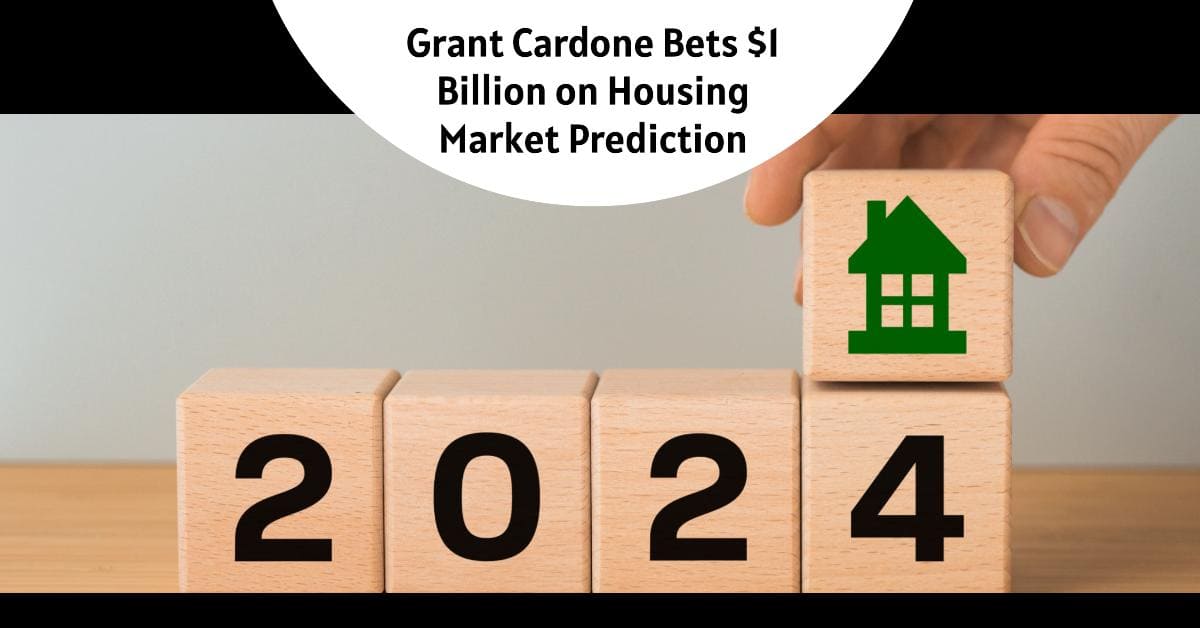The US rental market is poised for significant changes in the coming decade, according to real estate mogul Grant Cardone. Known for his bold market predictions and strategic real estate investments, Cardone has recently forecasted that the average rent in the United States could nearly double within the next ten years.
Cardone's prediction comes at a time when the American housing market is experiencing a unique set of circumstances. High mortgage rates have led to a situation where, for the first time in decades, renting is more cost-effective than buying in all 50 states. This is based on a report from Realtor.com, which highlighted that it's currently 60% cheaper to rent than to purchase in the country's largest metropolitan areas.
The disparity between the cost of ownership and renting is something Cardone describes as highly unusual and temporary. With the average 20-year fixed mortgage rate standing at 6.99% as of June 2024, the highest since 2001, the gap between owning and renting is wider than it has ever been in recent memory. Cardone argues that if mortgage rates remain elevated, rents will inevitably rise to close this gap.
Cardone's projections estimate the average rent, which is currently around $1,800, to reach nearly $3,000 by 2034. This potential increase in rent is expected to drive property valuations higher, presenting what Cardone believes to be a golden opportunity for investors. He is so confident in this prediction that he is actively investing $1 billion into properties he considers undervalued, particularly large multifamily properties with distressed debt.
This forecast is not without its implications for the broader economy and society. If rents were to increase as predicted, the impact on the average American renter could be substantial. It raises questions about affordability, wage growth, and the potential for increased demand for affordable housing solutions.
What factors might contribute to this increase?
Grant Cardone's prediction of a potential doubling in average rent over the next decade invites a closer look at the elements that could contribute to such a significant increase. Here are some of the key factors that might play a role in this predicted rise:
- Economic Growth and Demand: As the economy grows, so does the demand for housing. A robust economy can lead to higher wages, which in turn increases people's ability to pay for housing, pushing rents higher.
- Limited Housing Supply: A critical factor contributing to rising rental rates is the limited supply of housing. When the demand for rental properties outstrips the supply, landlords can charge more for rent.
- Population Increases and Urbanization: Urban areas, in particular, may see rent increases as more people move to cities in search of employment and better opportunities. This urban migration can lead to a higher concentration of renters competing for a limited number of units.
- Inflation and Cost of Living: Inflation affects all sectors of the economy, including housing. As the cost of living rises, so does the cost of maintaining and operating rental properties, which can be passed on to tenants in the form of higher rents.
- Government Policies and Regulations: Legislation and regulations can also impact rental prices. For example, changes in zoning laws, rent control measures, and housing subsidies all have the potential to influence the rental market.
- Gentrification and Neighborhood Revitalization: As neighborhoods undergo gentrification, property values and, consequently, rents can increase. This often results in the displacement of lower-income residents who can no longer afford the rising costs.
- Wages Not Keeping Pace with Rent Increases: If wages do not increase at the same rate as rent, tenants may find a larger portion of their income going towards housing costs, leading to a greater number of cost-burdened households.
- Market Dynamics: The interplay of market demand and supply, property taxes, operating expenses, and capital improvements all significantly shape rental prices. Landlords may increase rent to cover these costs or to align with market comparables.
- Affordability Crisis: With rents growing faster than incomes, many renters face affordability issues. Other economic factors, such as skyrocketing inflation, further strain household budgets, exacerbating the situation.
These factors, among others, contribute to the dynamic nature of the rental market. While predictions like those made by Grant Cardone provide a glimpse into potential future trends, the actual trajectory of the rental market will depend on how these and other unforeseen factors interact over the coming decade.
For individuals, understanding these factors can aid in making informed decisions about renting and investing in real estate. For policymakers, it underscores the importance of addressing the multifaceted challenges of housing affordability and supply. The conversation around the future of the US rental market is ongoing, and it is one that requires the attention of all stakeholders involved.
Cardone's perspective offers a valuable insight into the potential future of the US rental market. It serves as a reminder of the dynamic nature of real estate and the importance of staying informed about market trends. Whether his predictions will materialize remains to be seen, but they certainly provide food for thought for renters, homeowners, and investors alike.
ALSO READ:
- Hottest Housing Markets Predicted for 2024
- Housing Market Predictions for Next 5 Years (2024-2028)
- Housing Market Predictions for the Next 2 Years
- Housing Market Predictions: 8 of Next 10 Years Poised for Gains
- Housing Market Predictions: Top 5 Most Priciest Markets of 2024
- Real Estate Forecast Next 5 Years: Top 5 Future Predictions
- Housing Market Predictions for 2027: Experts Differ on Forecast




